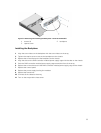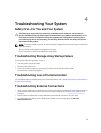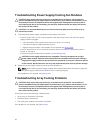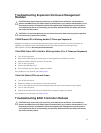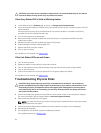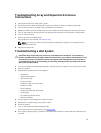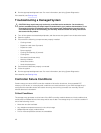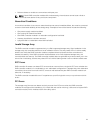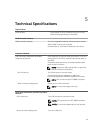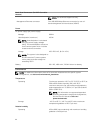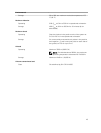
9. Run the appropriate diagnostic test. For more information, see Using System Diagnostics.
If the tests fail, see Getting Help.
Troubleshooting a Damaged System
CAUTION: Many repairs may only be done by a certified service technician. You should only
perform troubleshooting and simple repairs as authorized in your product documentation, or as
directed by the online or telephone service and support team. Damage due to servicing that is
not authorized by Dell is not covered by your warranty. Read and follow the safety instructions
that came with the product.
1. Turn off the system and attached peripherals, and disconnect the system from the electrical outlet.
2. Open the system.
3. Ensure that the following components are properly installed:
– Cooling shroud
– Expansion-card risers (if present)
– Expansion cards
– Power supply(s)
– Cooling-fan assembly (if present)
– Cooling fans
– Processor(s) and heat sink(s)
– Memory modules
– Hard-drive carriers
– Hard-drive backplane
4. Ensure that all cables are properly connected.
5. Close the system.
6. Run the appropriate diagnostic test. For more information, see Using System Diagnostics.
If the tests fail, see Getting Help.
Controller Failure Conditions
Certain events can cause a RAID controller module to fail and/or shut down. Unrecoverable ECC
memory or PCI errors, or critical physical conditions can cause lockdown. If your RAID storage array is
configured for redundant access and cache mirroring, the surviving controller can normally recover
without data loss or shutdown.
Critical Conditions
The storage array generates a critical event if the RAID controller module detects a critical condition that
could cause immediate failure of the array and/or loss of data. The storage array is in a critical condition if
one of the following occurs:
• More than one fan has failed
• Any midplane temperature sensors in the critical range
• Midplane/power supply module failure
• Two or more temperature sensors are unreadable
40




